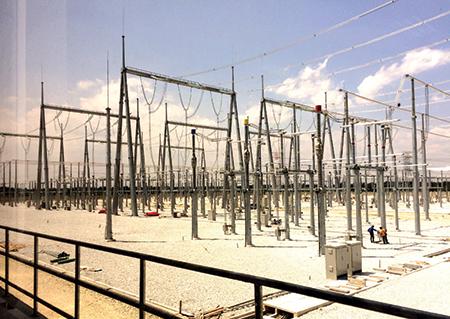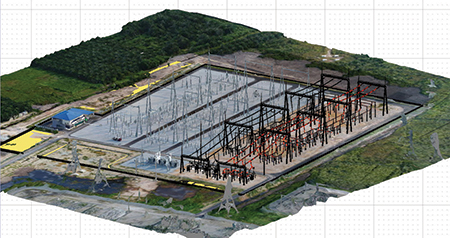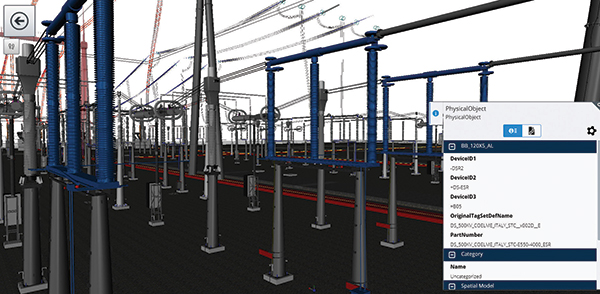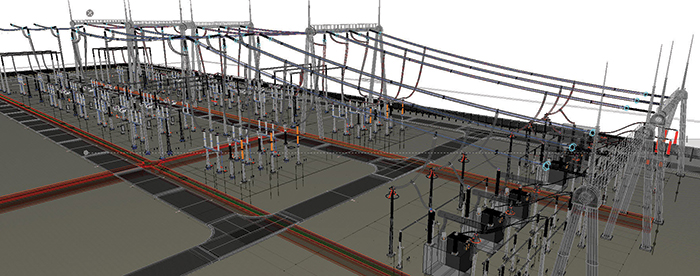The 2018 winner of Bentley System’s Year in Infrastructure award in the Utility Transmission and Distribution Category was Pestech International’s Malaysia Substation Project. Following is a description of the project.

Source: courtesy of Pestech International
Olak Lempit is located within the district of Banting, Selangor Darul Ehsan, Malaysia. Most of the population of Olak Lempit is of Javanese origin who migrated from Indonesia. Olak Lempit is located near the Lempit River, from which the town’s name derives. With its strategic location 30 minutes from Malaysia’s largest international airport, KLIA, and 45 minutes from the country’s busiest shipping port of Klang, the village rapidly developed into an industrial zone with various plants and manufacturing factories, commercial offices, shops, residential houses, and international schools. This growth has resulted in the need to expand the power supply in the region. The Olak Lempit substation will be expanded from a 275/132-kilovolt substation to a 500-kilovolt substation. The owner, Tenaga Nasional Berhad (TNB), expects the work to be done using the latest substation technology.
TNB awarded Pestech International Berhad an RM 79.5 million contract to build this next-generation substation in Olak Lempit. The scope of work was to supply, erect, commission 2 x 1050 MVA autotransformers, 500kV switchgears, 275kV switchgears, and the ancillary equipment with associated civil work for the main intake substation.
The Challenge
The usual complications existed for this project. There were tight deadlines, and the team wanted to move beyond some historically manual processes – Bill of Materials (BOM) generation, preparation of cable management schedules, and verification of the as-built drawings. Additionally, with this substation, the cost to supply materials is unusually high due to air freight charges, and errors in design could create material shortages that could cause urgent procurement requests increasing costs. Finally, this substation is brownfield, and the lack of as-built drawings or inaccurate as-built drawings could create challenges for matching the existing substation. Other considerations included clash detection across disciplines – C&S, Electrical, Architectural – and error checking during design to minimize risk of rework during construction.
Complicating this project are a number of topological, environmental, and economic considerations. The existing and planned sites are surrounded by palm oil plantations and villages. Multiple contractors will be working on the site to deliver both the new transmission lines as well as other expansions to the substation facility. Utilizing existing infrastructure where possible, while minimizing raw material and equipment costs, places an additional economic and logistical challenge on the project. Lastly, the existing design must be future-proof for future expansion, including the addition of a new power generation plant that is expected to enter the grid in 2023.
Facing a tight 15-month schedule and knowing the significant benefit that this project will have on the region for generating additional power, Pestech undertook a robust, collaborative, efficient, and digital approach to deliver a very challenging project.
The Solution
Pestech created a digital twin of the existing site and leveraged the power of the integrated solutions to create a new substation design.

The photos taken using the drone and converted to reality models included drawings-to-scale which is considerably important on brownfield substation projects where interfacing with the existing substation is crucial in insuring smooth delivery of the project. In addition, by creating this digital context of the existing substation, the team was able to perform planning on the storage area and equipment transportation access helping to minimize the impact to the environment and villagers nearby.
Source: courtesy of Pestech International.
From creating 3D models of the existing region to checking for obstructions, obstacles, and clashes, to using intelligent modeling to optimize the substation design, this digital approach enabled Pestech to realize a more complete and cost-effective design.

With creation of the database, 2D and 3D symbols based on manufacturer inputs, the team designed an intelligent model, rather than just graphical, and could navigate from signal line to 3D layout.
Source: courtesy of Pestech International.
Enabling seamless collaboration between previously disconnected disciplines, while also implementing a connected data environment that maintained engineering information accurately, allowed virtual models of the design to be realized.
Sean Lee, an assistant manager with Pestech, said, “[We] implemented Bentley Substation throughout the project [on the] primary and secondary design: Bentley Raceway and Cable Management for cable routing design; Navigator for walk-throughs and clash detections; ProjectWise for document management; and MicroStation for 3D modeling. Using symbol libraries and report templates developed in 2D and 3D are easily produced with reports automatically generated. This had reduced the design time by an average of 50 percent out of the different functions implemented.”

Cable and raceway management is integrated with the overall workflow. The BOM for the cable ladder accessories (Tee Joints, Cross Joints, Reducers, etc.) can be automatically generated. The fill capacity of each ladder can be pre-determined, the exact length of the multi-core can be generated with a click of a button, and rerouting of the multicore can be done automatically based on the cable schedule.
Source: courtesy of Pestech International.
The Result
Because of Pestech’s digital workflows, numerous benefits to the project have been realized. These include a 50 percent reduction in drawing creation time, a 60 percent reduction in revisions due to clashes and interferences, a reduction of cable schedule reviews from days to hours, and a 10 to 20 percent reduction in cable and electrical component waste. These savings have helped Pestech realize an RM 200,000 savings compared to similar projects. Pestech’s digital advancement has realized savings not only for this project, but also contributed to realizing the continued future growth of Olak Lempit.
 Teresa Elliott is the industry marketing director for Utilities at Bentley Systems. She has been in the infrastructure industry for 20 years and spent most of her career focused on design, GIS and asset management solutions across various infrastructure segments including communications, electric, gas and water utilities, transportation and photogrammetry. Working with customers to tell the story of how technology helps them to enable intelligent information management processes across asset lifecycles is a passion for Elliott. She loves collaborating with customers and industry experts on digital transformation topics in infrastructure, and helping to improve how we define and communicate the value of Connected Data Environments, Digital Twins, BIM, and GIS in support of project delivery and asset performance.
Teresa Elliott is the industry marketing director for Utilities at Bentley Systems. She has been in the infrastructure industry for 20 years and spent most of her career focused on design, GIS and asset management solutions across various infrastructure segments including communications, electric, gas and water utilities, transportation and photogrammetry. Working with customers to tell the story of how technology helps them to enable intelligent information management processes across asset lifecycles is a passion for Elliott. She loves collaborating with customers and industry experts on digital transformation topics in infrastructure, and helping to improve how we define and communicate the value of Connected Data Environments, Digital Twins, BIM, and GIS in support of project delivery and asset performance.







